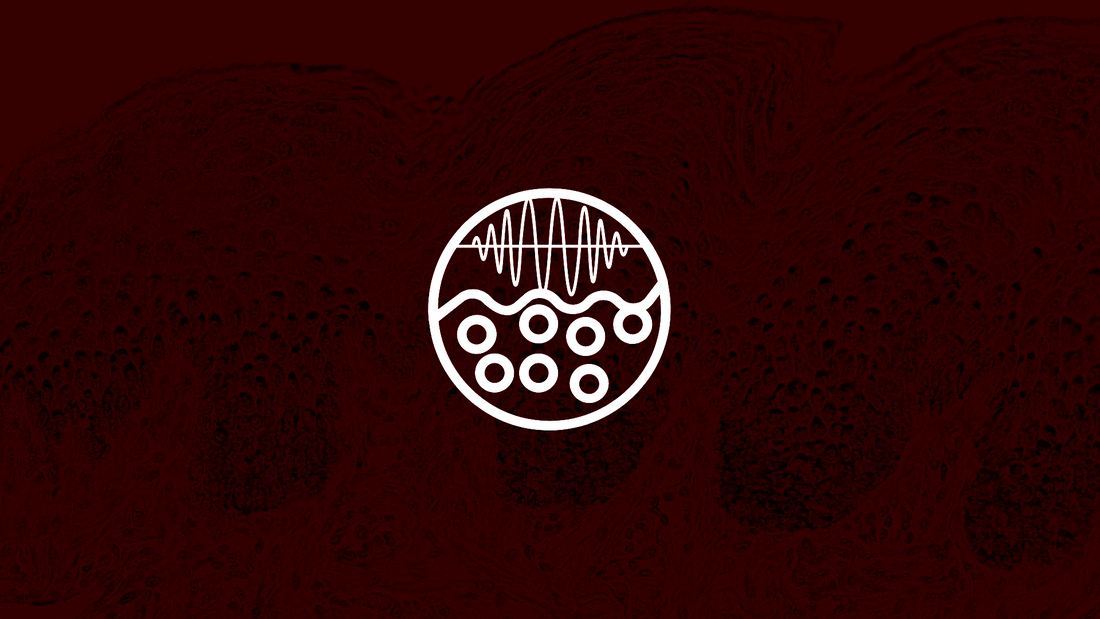Melanin is the substance produced in the body that gives the skin, eyes, and hair their color.
It also acts as a natural sunscreen by absorbing harmful UV rays. More melanin means darker pigmentation. This causes a decrease in light absorption.
Does this mean that users with darker skin should change their red light therapy treatment regimen? Or that it’s more or less effective?
In some cases, longer treatment sessions with less light intensity may be preferable for users with darker skin. However, users should test out treatment to see what is right for them.
In the following sections, we dive into this subject in more detail and provide references from some of the academic studies that cover this issue. Skip down a few sections for info about red light therapy treatment.
Red light therapy is effective for all skin types.
Check out the BIOMAX Series for more details about the most advanced consumer RLT panels on the market.
The Interaction Between Skin Tone and Light
Those with lower melanin levels have a 70 percent higher chance of developing skin cancer than those with higher melanin concentrations.
However, those with less melanin also synthesize Vitamin D from sunlight at far higher rates.
Melanin Categorization
In some clinical studies, researchers refer to the Fitzpatrick Skin Phototypes. This system categorizes skin types by how they react to UV light.
Type I-III includes all shades of “white” skin. Type I skin always burns/never tans. Type II skin always burns and tans minimally. Type III skin burns minimally and tans moderately.
Types III-VI include shades of light brown to “black” skin. Types III and IV burn minimally and tan well. Type V rarely burns and tans deeply. Type VI is said not to burn at all and tans deeply.

A different scale developed by skin optics researcher Steve Jacques rates skin color by the percentage of melanin distribution.
According to Jacques, optical properties of the skin affect the ability of light to penetrate tissue and deposit energy in the tissue based on the tissue’s optical absorption properties.
These include light-sensitive organelles and the amount of light-absorbing melanin.
Melanin and Skin Disorders
Disorders affecting melanin production and distribution include:
- Melasma (uneven concentrations of melanin with darker-than-normal patches)
- Vitiligo (uneven concentrations of melanin with lighter-than-normal patches)
- Post-inflammatory hyperpigmentation (excessive melanin concentrations due to inflammation or skin damage)
- Albinism (extremely low concentration of melanin)
- Erythema (excessive pigmentation due to overheating, including prolonged contact with LED light therapy devices, heat pads, etc.
Does Melanin Affect Red Light Therapy Absorption?
Melanin scatters light and filters UV rays in the epidermis. All other wavelengths are filtered to varying degrees. Higher melanin levels can result in more heat absorption, which may also occur with exposure to red wavelengths. This sensation tends to be very mild and generally not felt during treatment sessions of lower intensity.
This effect was observed in a study on photoprotection related to hair pigmentation, which provides more protection for the underlying skin.
In this study, Roldan-Kali et al. also noted that “Melanin takes in excessive light energy and converts it to heat," (2022).
Another study found a 3x-6x increase in skin temperature among dark-skinned individuals as a result of exposure to therapeutic lasers, although laser therapy is a fundamentally different treatment than exposure to R+ and NIR+ light diodes.

In yet another study, 40 study participants were measured for the effect of skin color on transmittance, reflectance, and skin temperature using red and near-infrared light with somewhat different results. Although there were differences in transmittance and reflectance between light and dark skin, the heat effect was not felt by any of the participants. No other adverse effects were reported, suggesting that red light therapy is safe for all skin types.
With at-home light therapy devices that feature LEDs, red wavelengths aren’t likely to cause significant heating in dark skin, unless the device is placed directly on the skin, which is not recommended anyway.
The heating effect can be reduced using LED devices that emit red wavelengths by simply moving further from the device to reduce the light energy absorbed into the skin. Meanwhile, the reduced light intensity can be accounted for by increasing the length of treatment sessions, if necessary to achieve the same results, for up to 20 minutes per day.
Skin Tone and Red Light Therapy Treatment Guidelines
Treatment guidelines remain much the same. Users should start with sessions of 4-20 minutes per day at a distance of a minimum of one foot from the panel. If the heat gets a bit too intense, the recommendation would be to lower the intensity of the panel or move it slightly further away.
Users may also want to shorten their treatment sessions or have the option of starting with shorter sessions and working up to what they feel comfortable with. It is not recommended to go over 20 minutes of treatment per day, although the side effects of doing so are minor.
BIOMAX Series for all Skin Types
The BIOMAX Series RLT panels are safe and effective for all skin types.
Take a look at the different panel sizes to see which one would be right for you!


